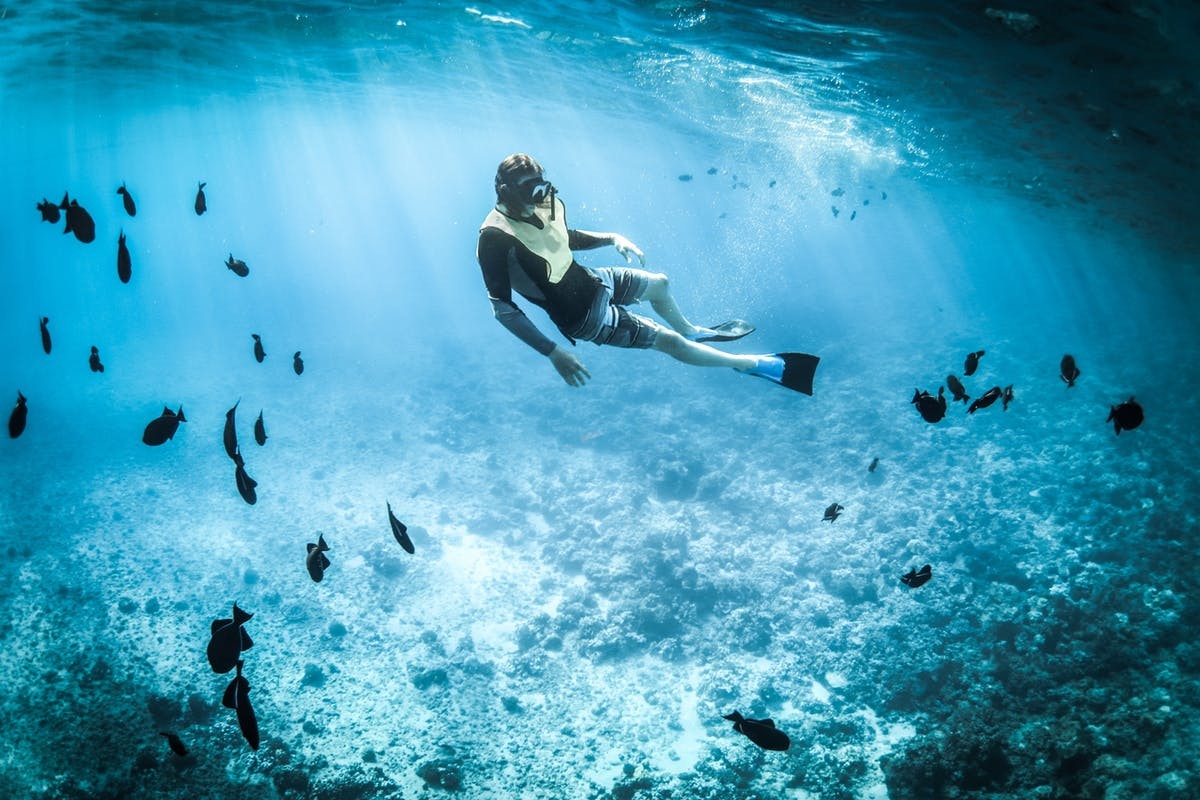This post may contain affiliate links, which provide a small commission to us when you purchase, at no additional cost to you. Thank you for helping to support our efforts in providing you the best, most up-to-date information for GloWell.
SPF season is here. Temperatures are soaring, school is out, and everyone is soaking up the sun. Naturally, you want to stay safe and protect your family from the harmful effects of the sun, so you’ve stocked up on sunscreen in every shape, size, and SPF imaginable.
But what if your sunscreen is actually doing more harm than good?
You may be surprised to find out that the product you thought was protective may actually be damaging our oceans – while putting your own health at risk.
Sunscreen is Killing the Coral Reef
In 2018, Hawaii passed a bill banning the sale of sunscreens containing chemicals known to contribute to the damage of coral reefs and ocean life.
The bill, which went into effect in 2021, prohibits the use of sunscreens containing oxybenzone and octinoxate chemicals used in more than 3,500 of the world’s most popular sunscreen products.
Just a small amount of these chemicals are enough to cause coral reefs to bleach.
What is Coral Bleaching?
In a healthy reef, coral and algae depend on one another to survive. The algae are the coral’s primary food source, not to mention the source of their beautiful array of colors.
When coral gets stressed – from increased ocean temperature, pollution, or chemicals – the algae leaves.
Without the algae, the coral loses its primary source of food and becomes weak and vulnerable. The absence of algae turns the coral white or pale, which is why this phenomenon is called “coral bleaching”.
How Sunscreen Harms Ocean Life
When you liberally lather up in sunscreen and then hit the water, your sunscreen washes off. Not by a lot – for every 10,000 visitors enjoying the waves, about 4 kilograms of mineral particles wash into the beach each day.
But even in small amounts, sunscreen chemicals catalyze the production of hydrogen peroxide at a concentration high enough to harm coastal marine organisms.
A single drop of the sunscreen chemical oxybenzone in more than 4 million gallons of water is enough to endanger organisms. Oxybenzone is known to be toxic to corals, algae, sea urchins, fish, and mammals.
An estimated 14,000 tons of sunscreen is believed to be deposited in oceans annually, with the greatest damage found in popular reef areas such as Hawaii and the Caribbean, according to the Ocean Foundation.
If oxybenzone has been known to kill coral reefs and be toxic to fish and animals, how safe is it for humans?
The Health Dangers of Sunscreen Chemicals
Like other personal care products, sunscreens are applied to your body and absorb into your skin. Unlike other personal care products, sunscreens may be reapplied multiple times over the course of a hot summer day, or used all over your body — from the tips of your ears to the bottom of your toes.
Sunscreen Chemicals Applied TO Your Body Get IN Your Body
Sunscreens commonly include “penetration enhancing” ingredients that help the products adhere to your skin, meaning many sunscreen ingredients are absorbed into the skin and can be measured in samples of blood, urine, and breast milk.
Sunscreens are available in two forms:
- Chemical sunscreens which are absorbed into your skin and then absorb UV rays
- Mineral sunscreens which scatter or block UV rays (also known as physical sunscreens)
The most common sunscreens on the market use chemical filters to protect skin, and the most widely used chemical found in these sunscreens is oxybenzone.
Why you should be concerned about oxybenzone:
- Oxybenzone has been found in 65% of non-mineral sunscreens, and the CDC has detected oxybenzone in 96% of the American population.
- Oxybenzone has been found in studies to be a hormone disruptor — linked to altered reproductive and thyroid hormones. Oxybenzone can also cause allergic skin reactions.
What ELSE is in Your Sunscreen?
Inactive ingredients in chemical sunscreens can pose just as many health risks as the active ones.
Methylisothiazolinone, a chemical preservative found in 94% of sunscreens on the market, was named by the American Contact Dermatitis Society as the “allergen of the year” in 2013.
Since 2015, the European Scientific Committee on Consumer Safety concluded that no concentration of methylisothiazolinone could be considered safe in leave-in cosmetics, but the ingredient is legal here in the US.
How can you avoid these toxic and environmentally unfriendly products?
Mineral Sunscreens Offer Safer Sun Protection
Mineral sunscreens use physical organic compounds like zinc oxide and titanium dioxide to physically block ultraviolet rays.
Mineral sunscreens tend to score highly with the Environmental Working Group because they provide strong sun protection with few health concerns.
Zinc oxide is the EWG’s top choice for sun protection; it offers strong protection against UVA rays, greater than titanium dioxide and chemical sunscreens.
Mineral sunscreens have doubled in popularity over the past ten years as more people begin to understand the safety benefits of choosing mineral over chemical sun filters.
As a result, they’re easier to find the formulations are improving. (You don’t have to look like a 1970-s era lifeguard with a thick layer of white chalky goo on your nose if you choose a zinc-based sunscreen today.)
Many mineral sunscreens are also formulated with natural and certified organic inactive ingredients, as well.
(Amazon has a great selection of mineral sunscreens that contain Zinc oxide as well. Shop for yours here.)
You Can Make a Difference
The biggest change you can make is in the products you buy.
If you’ve been relying on the same old, brand-name sunscreens that you’ve bought for years, it may be time to do better. Instead of choosing a sunscreen by looking for a recognizable name on the bottle, look at the ingredient list instead.
- Choose mineral sunscreens that protect skin with a natural, physical sunblock.
- Avoid chemicals such as oxybenzone and octinoxate.
- Check the EWG for a list of safer, more eco-friendly sunscreens.
When you choose a better sunscreen, it’s safer for you and better for our oceans. And that’s a win-win..















Join the GloWell Community on Social!
Don't risk missing a single thing. Follow us on social and become part of the GloWell community.